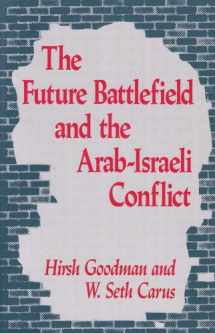
The Future Battlefield and the Arab-Israeli Conflict (Near East Policy Series, No 1)
Book details
Summary
Description
The revolution now taking place in the technology of war is one with potentially dramatic implications for the Arab-Israeli military balance. In this important book, two Middle East military experts assess the impact of technological innovation on Israeli and Arab military forces. They concentrate primarily on Israel and Syria, since Syria remains intent on achieving strategic parity with Israel while other Arab countries are less inclined to become militarily involved.
The authors outline a number of developments and their consequences. These include the proliferation of military technologies, which make available types of equipment previously unattainable, and the electronics revolution, which permits acquisition of vastly more sophisticated command, control, communications, and intelligence systems. New weapons systems - long range artillery rockets, ballistic and cruise missiles, and strike drones - permit attacks deep in enemy territory.
Goodman and Cams see all these changes as a mixed blessing for Israel and Syria. In both countries, human resources will be tested by the need to develop, use, and maintain such highly sophisticated equipment. Similarly, the cost of such sophisticated hardware will strain the financial resources of both countries. The authors' assessment of the impact of changes on the future battlefield has applications beyond the Arab-Israeli conflict. In such countries, the importance of a domestic weapons industry will be heightened as reliance on foreign sources becomes less attractive, for reasons the authors discuss. Reliance on good tactics and operational methods will remain keys to success. But in all cases, the benefits of the new technologies will depend on the relative skill with which countries can use them. Between Israel and Syria, the authors see the advantage as Israel's.
The Future Battlefield and the Arab-Israeli Conflict will be of interest to military and strategic specialists, political scientists concerned with international relations, Middle East specialists, and those interested in the impact of scientific and technological change on policy. This volume is the first in a series developed with the Washington Institute for Near East Studies.


We would LOVE it if you could help us and other readers by reviewing the book
Book review



